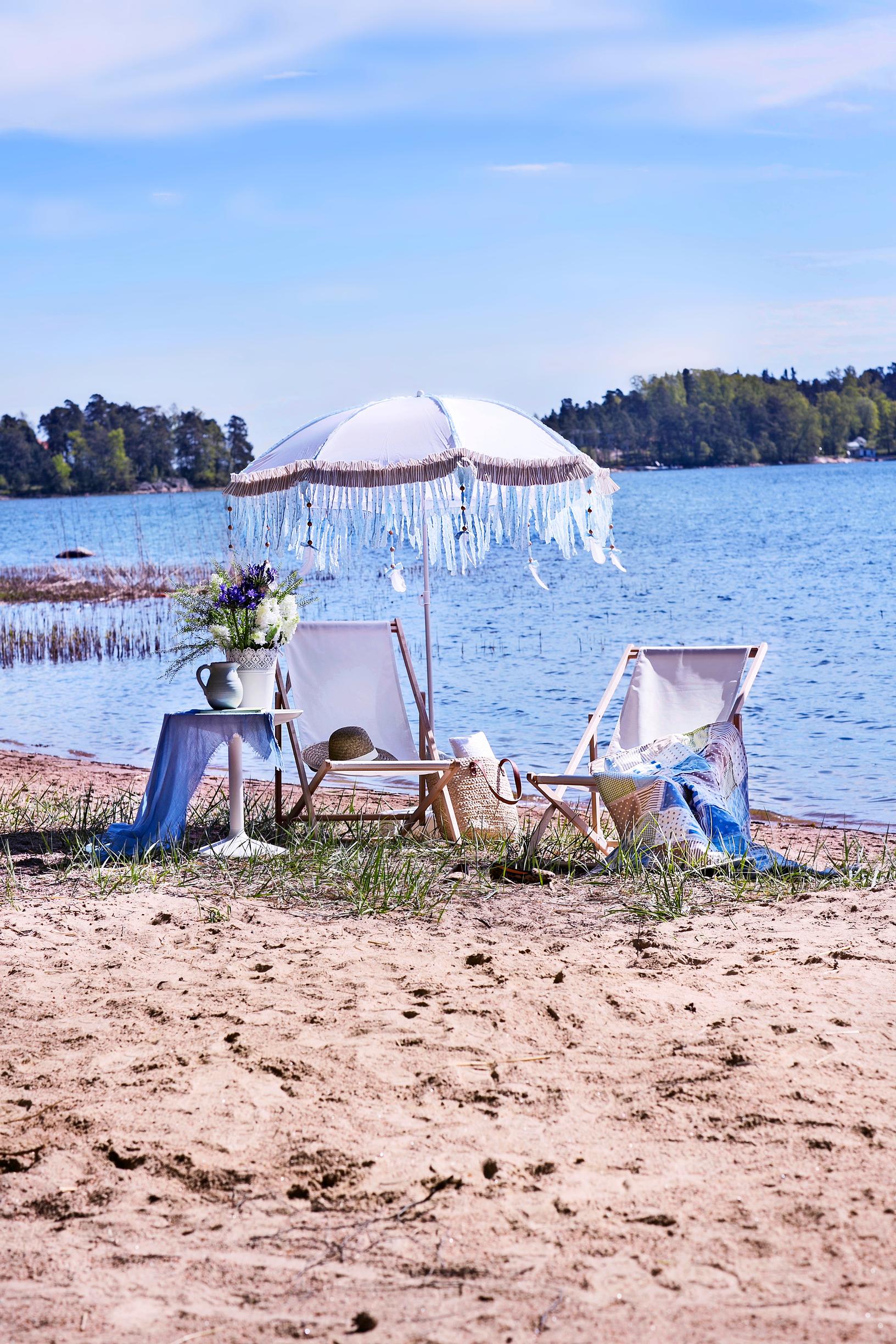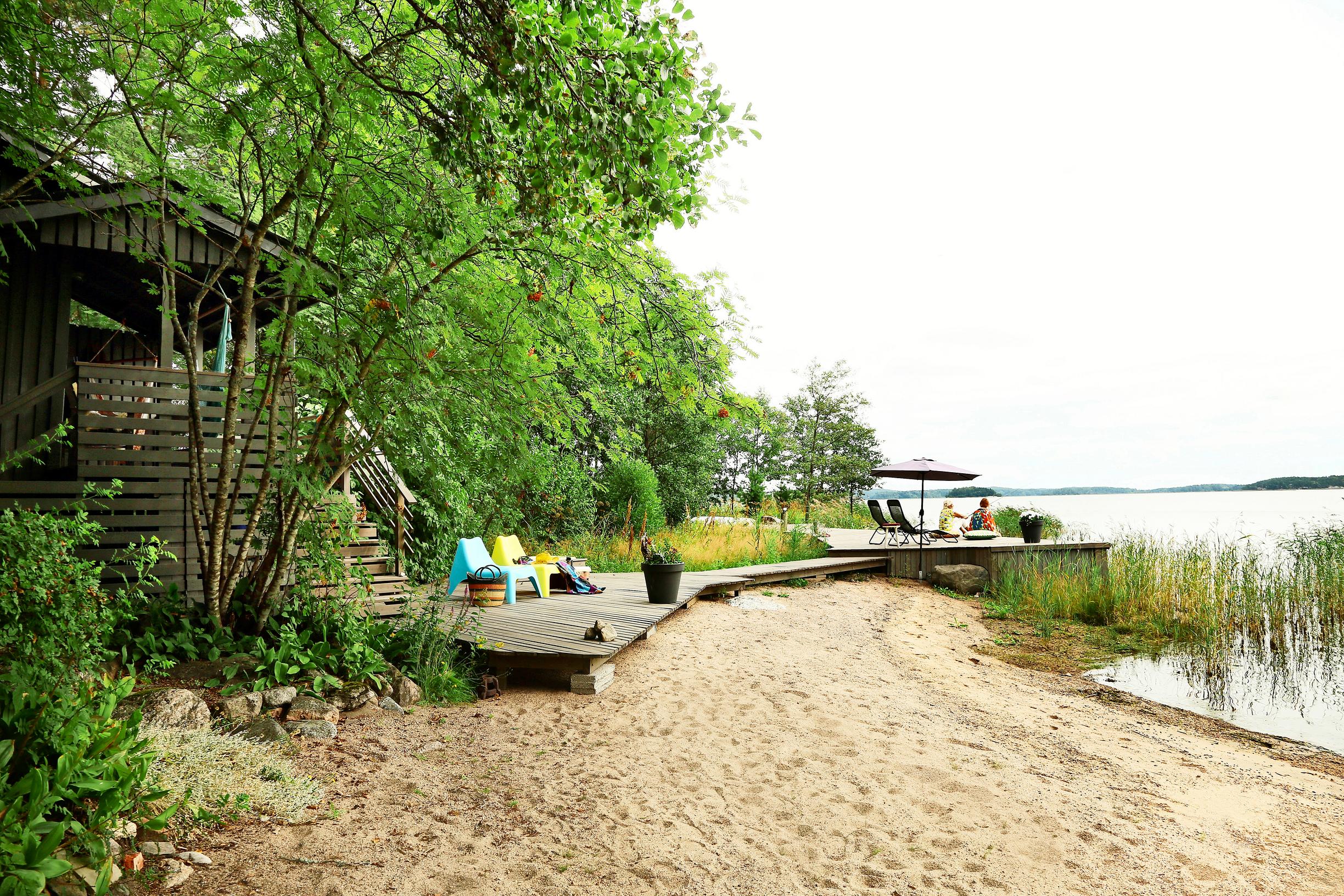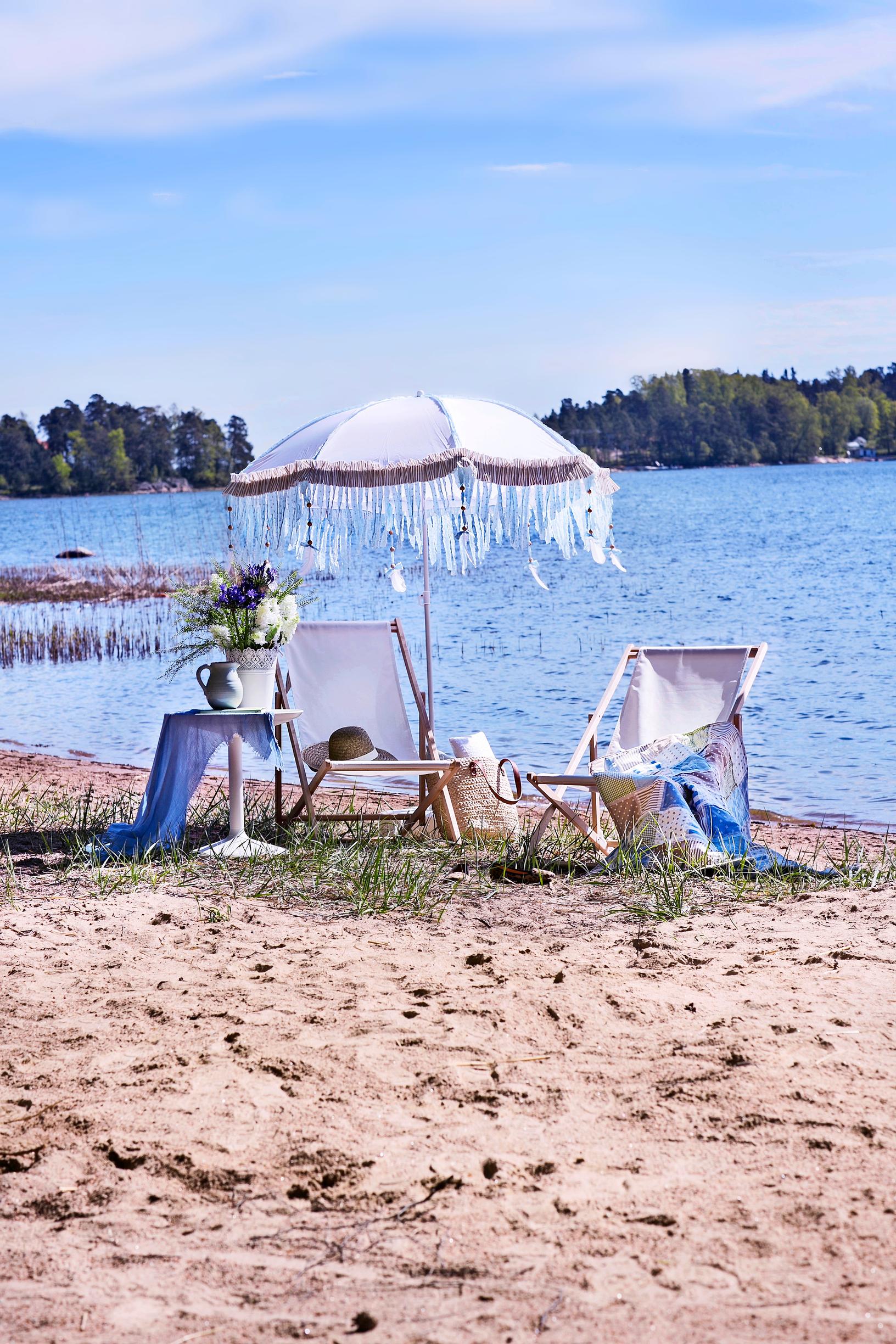
Summer house with a backyard beach—11 tips to create a dreamy beach from a muddy shore
A private sandy beach can turn a cottage vacation into a luxurious experience for both kids and grown-ups. Just wishful thinking? We examined the techniques and cost to truly transform even a muddy reed bed into a dream sandy beach.
1. Where can you build a beach?
A beach can be built on nearly any gently sloping shoreline. It's not the best idea to dump sand onto solid rock or where the water deepens sharply right beyond the shoreline. If the bottom is soft, start with a geotextile. If it’s extremely soft and muddy, place a plastic geogrid with a mesh size of roughly 50 × 50 millimeters (2 × 2 inches) beneath the geotextile. This geogrid helps prevent uneven sinking, enhancing the ground’s load-bearing capacity.
2. When can you dredge?
Dredging is performed during open water, either from the shore, from a pontoon barge, or using a dredging machine. In winter, dredging can take place on ice that’s strong enough to support an excavator’s weight. Any disposal ponds should be prepared before dredging starts. Because the process temporarily clouds the water, it’s wise to avoid prime swimming season. In spring, dredging might disturb nesting birds and spawning fish.

3. Why is a geotextile needed under the sand?
A geotextile is used to keep different soil types separate. It lets water pass through, preventing water pockets. Geotextiles come in five categories. An N1- or N2-grade fabric is usually strong enough for a cottage beach, while heavier-duty grades are used for roads, for example.
4. How is geotextile used?
Often, both the geotextile and sand are laid on ice cleared of snow in winter, so that once spring arrives, the fabric and sand sink to the bottom. Alternatively, you can lay the geotextile in the fall and anchor it with large stones, then bring in sand onto the ice in winter. This approach is more precise and helps protect the geotextile.
5. How strong is the ice?
If dredging is done from the ice or if sand is spread on the ice, you must ensure it can support your machinery. By late winter, ice is at its thickest. The effective thickness of the ice determines its load capacity. To calculate it, add the thickness of solid ice to half the thickness of ice crust (snow that has turned to ice). If the effective thickness is 20 centimeters (8 inches), the maximum vehicle weight is 2,000 kilograms (4,400 lbs). At 50 centimeters (20 inches), it can carry up to 12 metric tons (about 13 short tons).
6. Will the brought-in sand stay in place?
A cottage owner described their project online: “Now, after four years, my neighbor is enjoying a great sandy beach at my expense.” In other words, waves and currents from an open lake may gradually carry the sand off. Mixed-grade sand with both fine and coarser particles settles more firmly than uniform sand. You don’t need to add stones to the mixture, as they eventually rise to the surface and can be uncomfortable underfoot.

7. Are there different types of sand?
For a beach, natural sand with a grain size of 0–8 millimeters (up to about 5/16 in) works well. A top layer of so-called play sand—typically 0–4 millimeters (up to about 3/16 in)—also works nicely and compacts a bit more over time. Playground sand of 1–8 millimeters (0.04–0.31 in) is wet-sieved to remove dust.
8. Can you get a beach on an island?
If you plan to dredge with a dredging machine or a pontoon barge fitted with an excavator, being on an island isn’t necessarily an issue if the water route is short enough. However, laying sand in winter with heavy trucks or a tractor and trailer generally requires building a reinforced ice road. This involves keeping the route clear of snow and repeatedly pouring water to build up the ice, which is expensive. If you’re determined and energetic, you could haul sand in many smaller loads using a trailer attached to a snowmobile or ATV.
9. Does a sandy beach require maintenance?
Yes. Each summer, it’s best to rake the beach with a stone rake before airborne seeds can properly root. Rake away autumn leaves before they decompose. You might be tempted to cut down nearby deciduous trees to keep the beach clean, but especially in a shoreline zoning area, you should check whether you need a permit.
10. How much does a private sandy beach cost?
With geotextile for the shore and ice plus a couple of loads of sand spread by a tractor, you might create a beach for a few thousand euros. But if you need to dredge a muddy reed bed using a special dredging machine, dig a disposal pond, and add a geogrid, the cost can easily climb to 20,000 euros.
11. A quick summary in a nutshell
- To build a swimming beach on a soft bottom, a geotextile is almost always recommended to keep sediment out of the sand.
- Winter is the best time to build, as it’s easier to spread a 10–30 centimeter (4–12 in) layer of sand on geotextile laid on the ice.
- Freezing the area before adding sand makes the work safer.
- Dark sand absorbs spring sunlight and melts the ice beneath it while the rest of the lake is still frozen. The sand’s weight pushes down the ice until it finally gives way, allowing the sand and fabric to settle on the bottom.
- In shallow water, sand can also be added in the summer using an excavator with an extended boom.
Be sure to check your local regulations and permit requirements, as they may vary depending on your country or region.
Expert: CEO Kari Lassinaro, engineering office Insinööritoimisto Lassinaro


